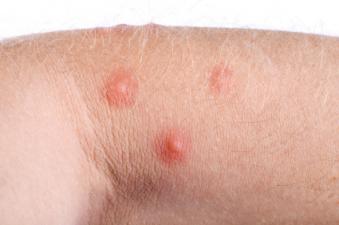 First aid response to an insect sting:
First aid response to an insect sting:- For victims showing signs of anaphylactic shock or victims who develop mouth or throat swelling after a bite - call EMS or 911
- If the stinger is visible, then remove it with a blunt knife. DO NOT use tweezers, because it may inject more poison into the person.
- Apply an ice pack or cold compress.
- Elevate the affected part
- Follow up with a doctor if pain and swelling persists
First aid response to snakebites:
- Applying a pressure immobilization bandage to the entire length of the bitten extremity will, slow the spread of the venom (poison) by slowing the lymph flow. The pressure should be sufficient so that the bandage is comfortably tight and snug but allows a finger to be slipped under it.
- DO NOT apply suction for the snakebites.
First aid for jellyfish stings:
- Wash the area with vinegar (4-6% acetic acid solution) as soon as possible for at least 30 seconds (to inactivate the venom [poison] or nematocysts)
- If vinegar is not available, a baking soda slurry/paste may be used instead.
- Once the nematocysts are removed or deactivated, the victim should be instructed to take a hot shower or immerse the affected part in hot water (temperature as hot as tolerated, or 45°C if there is the capability to regulate temperature), as soon as possible, for at least 20 minutes or for as long as pain persists.
|
||||
| Course Progression Bar | ||||
© 2025 Course content all rights reserved by American Academy of CPR & First Aid, Inc.®